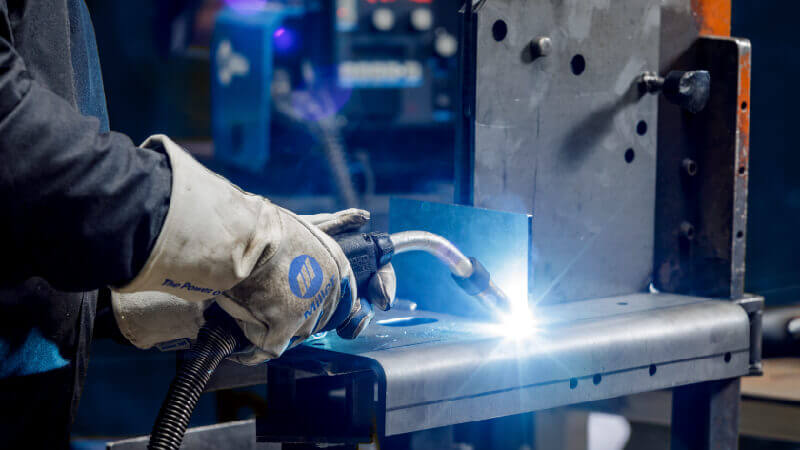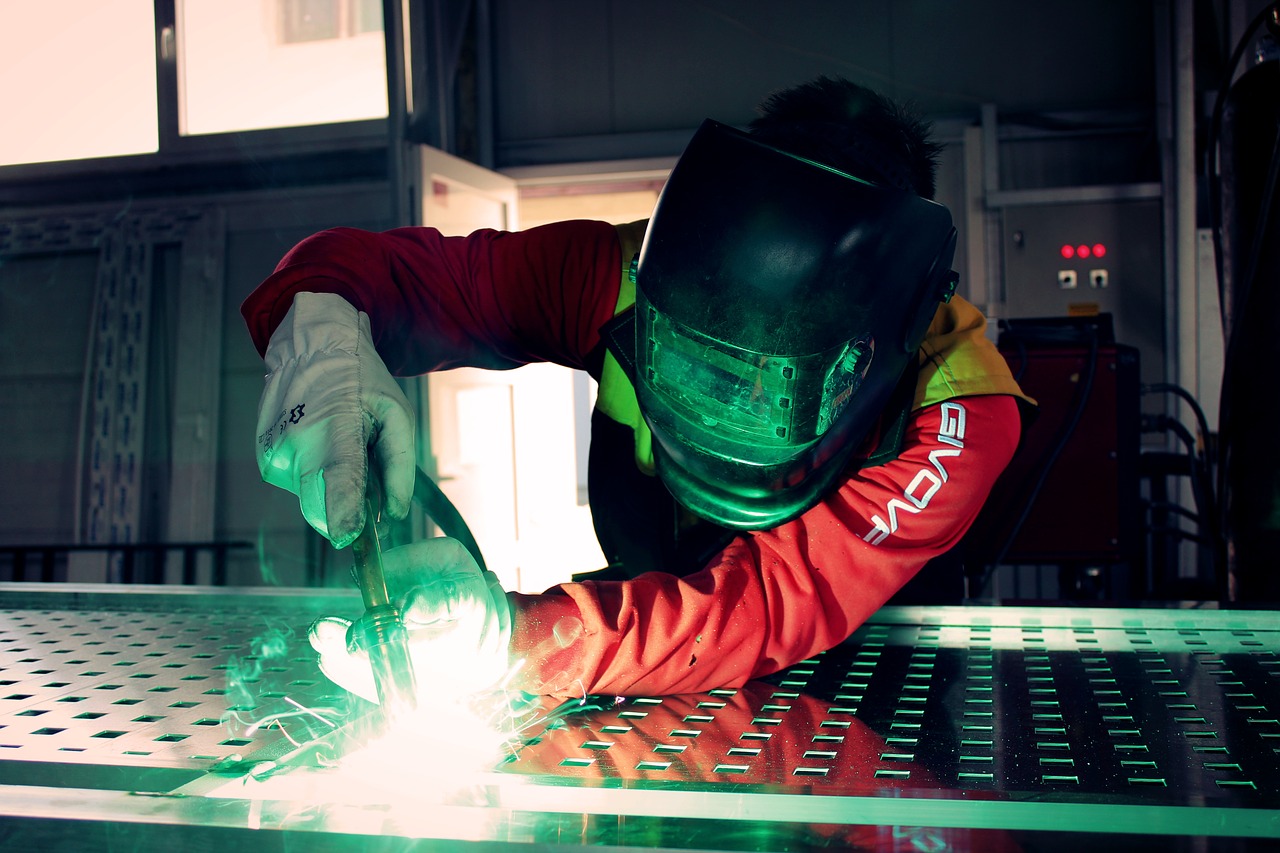Everything about Welding: Key Insights Into Techniques and Best Practices for Success
Welding includes a selection of methods, each matched for details materials and applications. Comprehending these methods, such as GMAW, SMAW, and TIG, is essential for achieving suitable outcomes. The ideal tools and safety and security practices can not be forgotten. As prep work and repairing play crucial functions in the welding process, understanding these aspects can greatly enhance the high quality of the last product. What are the vital elements that guarantee a successful weld?
Recognizing Different Welding Methods
Welding strategies encompass a range of approaches, each fit to specific applications and materials. Among the most typical strategies are Gas Metal Arc Welding (GMAW), Secured Metal Arc Welding (SMAW), and Tungsten Inert Gas Welding (TIG) GMAW, also referred to as MIG welding, is preferred for its speed and versatility, making it excellent for thin materials. SMAW, or stick welding, is favored for its simpleness and efficiency in outside environments, especially with thicker metals. TIG welding provides precision and control, making it suitable for intricate job and non-ferrous metals (Belgrade Fabrication). Each strategy has its unique advantages and factors to consider, allowing welders to choose the best approach based on the project's demands, material type, and desired outcomes. Understanding these strategies is necessary for effective welding
Essential Welding Equipment and Devices
While various welding techniques call for specific skills, the right equipment and devices are just as important for attaining quality outcomes. Vital welding devices includes welding equipments, which differ relying on the technique-- such as MIG, TIG, or stick welding. Safety equipment, including headgears, gloves, and aprons, warranties safety and security and comfort throughout the process. In enhancement, fixtures and clamps assist safeguard products in position, making sure accuracy in welds. Consumables like welding poles, wire, and protecting gas are additionally essential elements that affect the quality of the weld. Devices such as grinders and cutters assist in surface prep work and post-weld ending up, adding to an expert end result. Spending in top notch equipment eventually boosts the performance and effectiveness of welding projects.
Safety And Security Practices in Welding
Correct safety and security practices are necessary in the welding sector to protect employees from possible threats. Welders have to put on appropriate individual safety tools (PPE), consisting of headgears with proper shading, gloves, and flame-resistant apparel. Adequate ventilation is vital to reduce direct exposure to hazardous fumes and gases generated throughout the welding procedure. Furthermore, employees must be learnt the right handling of welding devices to stop mishaps. Fire safety and security measures, such as maintaining flammable materials far from the welding area and having fire extinguishers readily offered, are essential. Normal assessments of devices and workspaces can assist recognize potential risks prior to they result in accidents. By sticking to these security practices, welders can develop a much safer working setting and lessen risks connected with their trade.
Preparing Materials for Welding
Preparing materials for welding is an essential step that significantly affects the top quality and honesty of the end product (Montana Mobile Welding and Repair). Proper preparation involves cleaning up the surface areas to get rid of pollutants such as dust, oil, and rust, which can endanger the weld. Techniques such as grinding, fining sand, or making use of solvents are commonly used to achieve a clean surface. Additionally, guaranteeing that the products fit together comfortably is essential; spaces can lead to weak welds. It's additionally vital to consider the placement and positioning of the elements, as this will certainly impact the simplicity of welding and the last end result. Picking the suitable filler material and ensuring compatibility with the base steels is essential for attaining strong, long lasting welds.
Tips for Getting High-Quality Welds
Attaining top notch welds needs interest to detail and adherence to ideal practices throughout the welding procedure. Appropriate joint preparation is crucial, ensuring surfaces are free and tidy from pollutants. Picking the suitable filler product and welding technique based upon the base steels is crucial for suitable bonding. Maintaining regular travel speed and angle while welding can advertise and prevent issues uniformity. Additionally, managing warmth input is vital; too much heat can cause bending and damaged joints. If essential, on a regular basis examining the welds during the process allows for immediate adjustments. Employing suitable post-weld treatments, such as cleaning and stress alleviation, can boost the toughness and honesty of the weld, eventually guaranteeing a successful outcome.
Repairing Usual Welding Issues
Welding often offers obstacles that can impact the high quality and honesty of the last product. Common problems such as porosity, inconsistent weld beads, and overheating can arise, each needing particular repairing techniques. Comprehending these issues is vital for welders to improve their abilities and attain suitable outcomes.
Porosity Troubles Discussed
Although porosity can often be overlooked, it stays an important issue in welding that can endanger the stability of an ended up item. Porosity describes the presence of tiny gas pockets within the weld bead, which can lead and deteriorate the joint to early failing. This issue generally occurs from impurities, dampness, or incorrect shielding gas coverage during the welding procedure. To alleviate porosity, welders ought to confirm that the base products are dry and tidy, make use of ideal securing gases, and keep regular welding specifications. Consistently examining the devices and setting can additionally assist identify potential issues before they manifest in the weld. Attending to porosity successfully is crucial for attaining strong, sturdy welds that meet quality standards.

Irregular Weld Beans
Irregular weld grains can greatly affect the quality and toughness of a completed product. Different factors add to this issue, including inappropriate traveling speed, wrong amperage settings, and irregular electrode angles. When the welder relocates as well promptly, a bead might appear slim and do not have penetration, while relocating too slowly can trigger extreme buildup. In addition, using the wrong amperage can lead to either damaging or too much spatter, both of which concession weld stability. The welder's strategy, such as inconsistent torch movement, can also cause uneven grain appearance. To alleviate these problems, welders must focus on preserving stable, controlled activities and making sure proper equipment settings to accomplish harmony in their welds. Uniformity is key to accomplishing solid and trusted welds.
Getting Too Hot and Bending Issues
Too much warmth during the welding process can result in considerable getting too hot and buckling concerns, impacting the structural stability of the work surface. These problems commonly manifest as distortion, which can jeopardize alignment and fit-up, making more setting up challenging. Factors contributing to overheating include the choice of welding criteria, such as voltage and take a trip speed, in addition to the kind of material being bonded. To minimize these problems, welders should keep consistent travel rate and proper warm input while monitoring the workpiece temperature level. Furthermore, pre-heating or post-weld warm treatment can assist alleviate stresses brought on by fast cooling - Belgrade Fabrication. Regular evaluation and adherence to finest practices are crucial in preventing getting too hot and making certain the durability and dependability of bonded frameworks
Often Asked Questions
What Are the Job Opportunities in the Welding Market?
The welding sector provides diverse career chances, consisting of settings as welders, instructors, assessors, and designers. find more information Experts can operate in production, building, aerospace, and auto sectors, profiting from strong demand and competitive incomes in various roles.
Exactly How Can I Enhance My Welding Rate Without Giving Up High Quality?
To boost welding speed without compromising quality, one should exercise reliable techniques, keep tools, optimize settings, and boost hand-eye control. Regular training and looking for comments can additionally greatly add to accomplishing faster, top notch welds.
What Accreditations Are Offered for Welders?
Numerous qualifications exist for welders, consisting of those from the American Welding Culture (AWS), the National Facility for Building And Construction Education And Learning and Study (NCCER), and different industry-specific organizations. These credentials boost employability and demonstrate skill effectiveness.
How Does Welding Influence the Characteristics of Metals?
Welding affects the homes of metals by altering their microstructure, which can bring about modifications in firmness, ductility, and toughness. Heat input and air conditioning prices during the process substantially affect these product qualities.
Can I Weld Dissimilar Metals With Each Other?
